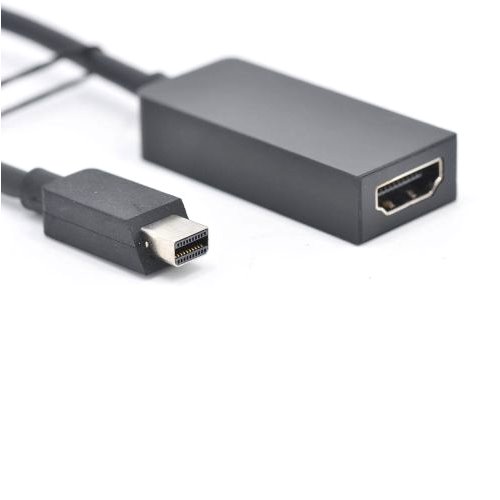MINI DP to HDMI connector
A high-definition adapter (VGA to HDMI) is a device used to convert VGA (Video Graphics Array) signals into HDMI (High-Definition Multimedia Interface) signals, so that you can use old VGA output devices (such as old computers, laptop) to a modern monitor, TV or projector that supports HDMI input. The following is an introduction to HD adapters:
From VGA to HDMI, the conversion process requires converting analog signals into digital signals. Therefore, the adapter usually requires a built-in dedicated chip to complete the signal conversion, and the chip requires power supply, so pay attention to the VGA to HDMI adapter. Is there a dedicated power cord attached? Generally, you just need to connect the power cord to the USB of the computer.
Connect legacy devices to modern monitors: HD adapters are a convenient solution for seamlessly connecting your legacy VGA output devices to modern HDMI-enabled monitors. This includes connecting older computers, laptops, or other VGA-enabled devices to newer HDTVs, monitors, or projectors.
High-definition image transmission: This adapter supports high-definition image transmission, allowing you to enjoy higher visual effects on modern display devices. This includes supported resolutions, such as 1080p, ensuring your images remain sharp.
Simple operation: HD adapters are usually simple in design and easy to use. All you need to do is plug the adapter into the VGA output port of your older device, and then connect the HDMI cable to the HDMI input port of your modern monitor.
Single digital interface: By using HDMI, the HD adapter gives you the advantages of a single digital interface without the need for additional audio cables, while providing high-definition video and supporting multi-channel audio.
Suitable for different scenarios: This adapter is very suitable for various scenarios, including home entertainment systems, corporate conference rooms, educational institutions, etc., allowing you to use and connect different models of equipment more flexibly.
In conclusion, the HD adapter provides a modern connection solution for using older VGA devices, ensuring you get a high-quality visual experience on new monitors.
What are the differences between VGA, DVI and HDMI?
VGA (Video Graphics Array), DVI (Digital Visual Interface) and HDMI (High-Definition Multimedia Interface) are three different video interface standards. They have some major differences in technical characteristics and applications:
Analogy vs. Numbers:
VGA: VGA is an analog interface originally designed to transmit analog video signals. Since it is analog, some details may be lost during the video conversion process, especially at high resolutions.
DVI: DVI was originally designed to support digital video, but it can also support analog video. Due to its digital nature, DVI generally provides clearer video and is suitable for high-resolution display needs.
HDMI: HDMI is a fully digital interface designed for high-definition multimedia. It supports high-resolution video, multi-channel audio and additional data channels such as Ethernet and ARC (Audio Return Channel).
Video and audio transmission:
VGA: VGA only transmits video signals and does not support audio. Therefore, if you use a VGA connector, you will need an additional audio cable.
DVI: DVI was originally designed as a video interface, but some of its variants (DVI-I and DVI-A) can support analog audio. However, most DVI connectors and modern devices primarily use DVI-D, a variant that only supports video, so an additional connection is still required for audio.
HDMI: HDMI generally supports both video and audio transmission without the need for additional audio cables.
Resolution and bandwidth:
VGA: VGA has limited resolution and bandwidth and is generally suitable for lower resolutions and not suitable for high-definition video.
DVI: DVI can support higher resolution, especially digital DVI, which can handle high-definition video.
HDMI: HDMI has the largest bandwidth and therefore can support the highest resolution and high quality video and audio.

Competitive Price:
Place of Origin: Taiwan
Sales Method: Export, Manufacture, OEM/ODM
Payment Term: T/T, L/C
Safety/Quality Approvals: Quality system meets ISO 9002 standard



















